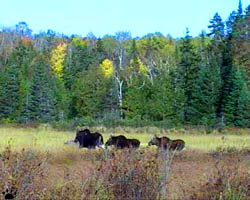
Moose family, Algonquin Provincial Park, Ontario.
Wild, Wild East - Part 6
The Northeastern part of the United States and the Maritime
Provinces of Canada were the first part of the New World to experience the effects
of capitalism. They were once almost totally deforested, and most larger animals
were hunted to extinction. It took decades of expensive reforestation and reintroduction
efforts to make this area green and full of wildlife again.
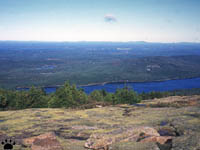
Acadia National Park, Maine. |
The coastline here is a labyrinth of fjords, islands,
and former river valleys flooded with sea at the end of the last Ice Age. It is
also a major flyway, used twice a year by millions of birds. |
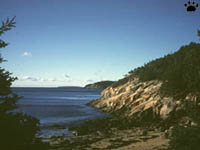
Acadia National Park, Maine. |
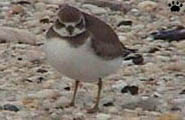 |
Birds of the Atlantic Flyway, upper
row, left to right: black-bellied plover (Pluvialis squatarola), American
golden plover (P. dominica), white-throated sparrow (Zonotrichia albicollis),
grasshopper sparrow (Ammodramus savannarum), song sparrow (Melospiza
melodia); bottom row, left - semipalmated plover (Charadrius semipalmatus),
right - greater snow goose (Anser coerulescens atlanticus). |
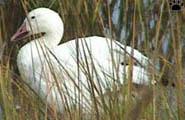 |
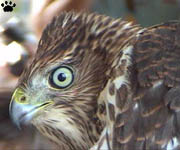
Cooper's hawk (Accipiter cooperii),
Cape May, New Jersey. |

Peregrine falcon (Falco peregrinus),
Cape May, New Jersey.
Cape May in the fall and Point Pelee, Ontario, in spring are among the best places
to see migratory raptors, owls, waterbirds, and songbirds. |
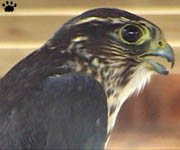
Merlin (F. columbarius),
Cape May, New Jersey. |
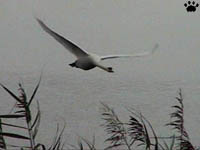 |
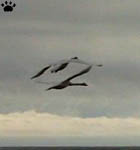 |
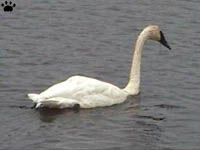 |
| Swans of the Northeast, left to right:
mute (Cygnus olor), tundra (C. columbianus), trumpeter (C. buccinator).
Lake Ontario. |
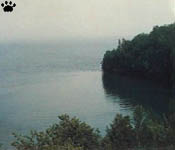
High tide, Fundy Nat'l Park. |
Bay of Fundy, which separates
Nova Scotia peninsula from mainland Canada, has the highest tides in the world:
up to 20 m in some places. Many coves and bays become mountain valleys at low
tide. Fundy Nat'l Park in New Brunswick is a good place to watch them. |
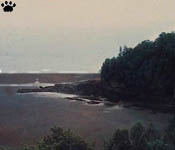
Low tide, Fundy Nat'l Park. |
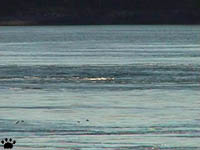
The Big Sow. |
Tidal currents create hundreds of whirlpools.
The largest of them, the Big Sow off Deer Island, New Brunswick, is 400 m/1300'
in diameter. It attracts lots of seabirds and occasionally marine
mammals. |
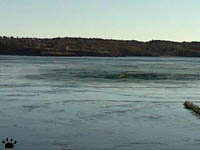
High tide, Fundy Nat'l Park. |
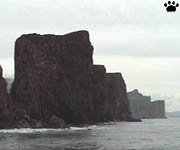 |
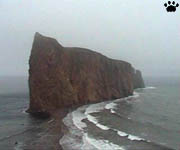 |
 |
| Coastline of Gaspe Peninsula, Quebec. |
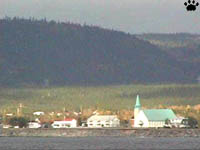
Coastal village, Gaspe Peninsula. |
Gaspe Peninsula in Quebec is the most scenic and
pristine stretch of coast anywhere between St. Lawrence River and Nicaragua.

Offshore island, Gaspe Peninsula. |
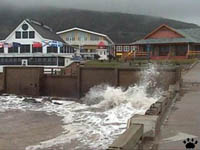
Coastal village, Gaspe Peninsula. |

Nothern gannets (Sula bassana), Isla Buenaventura. |
Small islands off Gaspe are the major breeding
sites for many seabirds and seals. |
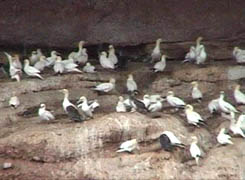
Nothern gannets, Isla Buenaventura, Quebec. |
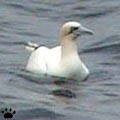 |
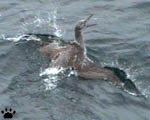 |
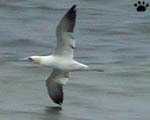 |
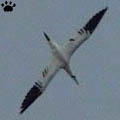 |
| Northern gannets, Isla Buenaventura. |
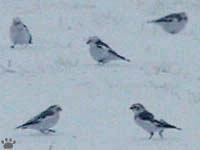
Snow buntings (Plectrophenax nivalis),
Iles de la Madeleine. |
Iles de la Madeleine are probably the most interesting
ones. In addition to seabird colonies, they are famous as the main breeding area
for harp seals. There's also some rare flora in the
sand dunes there. |
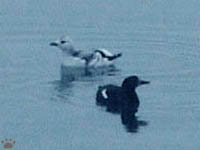
Black guillemots (Cepphus grylle) in winter and
summer plumage, Iles de la Madeleine. |
 |
 |
 |
 |
| Red fox (Vulpes vulpes) in
a snowstorm, Iles de la Madeleine, Quebec. |
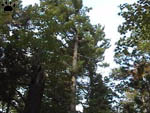
Eastern white pines, Kouchibouguac
Nat'l Park, New Brunswick. |
The Northeast was once a large boreal forest,
dominated by Eastern white pine (Pinus strobus). Some nice forest parks
still exist on both sides of the Canadian border, mostly in Minnesota, New Hampshire,
Maine, Manitoba, Ontario, Quebec, and New Brunswick. |
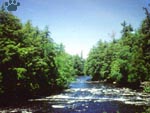
Canadian hemlocks (Tsuga
canadensis), Wisconsin |
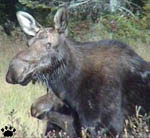
Moose, Kouchibouguac
Nat'l Park, New Brunswick. |
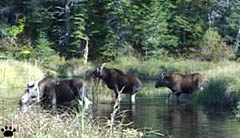
Moose (Alces canadensis),
Algonquin Provincial Park, Ontario. |

Moose, Kouchibouguac
Nat'l Park, New Brunswick. |

Canadian beaver (Castor
canadensis), Minnesota. |
Here you can see moose, gray and red wolves, beavers
(sometimes surprisingly tame), and other characters from the "true"
wilderness.

Tracks of red wolf
(Canis rufus lycaon),
Gaspe Peninsula. |

Wild beaver exploring
my toes, Hiawatha
Nat'l Forest, Michigan. |

Wolverine (Gulo gulo)
track, Laurentides
Reserve, Quebec. |
|
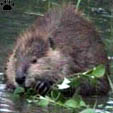
Beaver, Niobrara River,
Nebraska. |
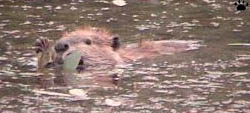 |
Canadian beavers, Voyagers Nat'l
Park, Minnesota. |
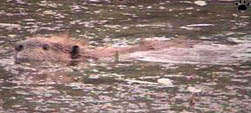 |
 |
 |
 |
 |
 |
 |
 |
 |
| Woodpeckers of the Northeast, left
to right: downy (Picoides pubecens), female and male (2 photos), hairy
(P. villosus), American 3-toed (P. dorsalis), male and female, black-backed
(P. arcticus), pileated (Dryocopus pileatus). La Mauricie Nat'l
Park, Quebec. |
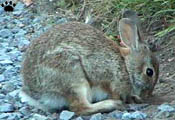
New England cottontail (Sylvilagus
transitionalis), Ninigret NWR, Rhode I. |
Boreal forests usually have low levels of biodiversity.
But some parts of the Northeast have escaped the last glaciation, so it has a
surprising variety of plants, invertebrates, amphibians, and small mammals. |
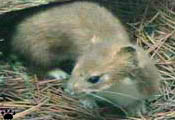
Least weasel (Mustela nivalis),
Labrador Hwy, Quebec. |
 |
 |
 |
 |
 |
| Frogs of the
Northeast, left to right: bull (Rana catesbiana), two photos, wood (R.
sylvatica), mink (R. septentrionalis), Northern leopard (R. pipiens).
|
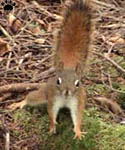 |
 |
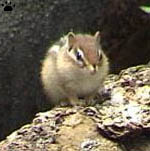 |
 |
| Northeastern squirrels, left to right:
red squirrel (Tamiasciurus hudsonicus), 2 photos, Eastern chipmunk (Tamias
striatus), Eastern gray squirrel (Sciurus carolinensis), black phase. |
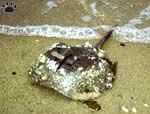
Horseshoe crab , Chesapeake Bay,
Maryland. |
Some of the "living fossils" also occur
in the Northeast: the funniest of North American mammals - starnose
mole (Condylura cristata), and the most ancient of all, horseshoe crab
(Limulus
polyphemus)- the living descendant of trilobites. |
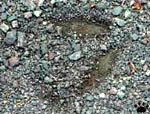
Moose track, Moosehorn NWR,
Maine. |
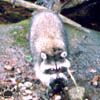
Raccoon
(Procyon lotor),
Washington, DC |
Millions of them appear on Atlantic
beaches in spring to lay eggs during high tide. But what have been just beaches
for 400 million years, is now beachfront property; more and more horseshoe crabs
are killed each year to make fish bait. They are probably the next key element
of the ecosystem to be lost. The last horseshoe crabs, still crawling out of the
polluted and overfished ocean into the world of skyscrapers and traffic jams,
are a good symbol of the American East. |
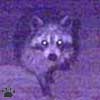
Raccoon hunting
horseshoe crabs,
Long Island, New York |
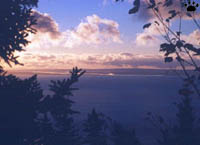
Bay of Fundy, New Brunswick.
Part 7. Northeastern Canada.
Back to Part 5
Home
|